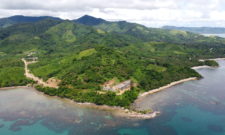The Philippines are made up of an archipelago of more than 7,000 islands of varying sizes located in the South-East of the Asian continent, thus locating the demarcation between the China Sea and the Pacific Ocean.
Covering an area of 300,000 square kilometers, the Republic of the Philippines is home to more than 110 million people.
In addition, Philippines properties for sale are booming, driven by a growing economy thanks to both tourism but also exports and international trade.
A STABLE AND HEALTHY ECONOMY
The Republic of the Philippines has one of the most dynamic economies in Southeast Asia, with gross domestic product growth of 6% in 2019. Its GDP amounts to more than US$ 330 billion, making the Philippine economy a leader within Southeast Asia.
Looking at the indicators of the Philippine economy, it can be seen that the country has been in a period of stability over the last decade. Indeed, the GDP is constantly increasing, inflation is under control (2.5%, i.e. within the Central Bank’s target range of between 2 and 4%), the unemployment rate is low (only 5%) and the public debt represents “only” 40% of the GDP (compared to nearly 100% for France or Canada, for example).
As for the latter, it can be seen that over the last few years, public debt in relation to GDP has only decreased from 49.2% at the end of 2013 to 39.9% at the end of 2019 in a context of strong growth (6.6% average annual growth). The IMF forecasts a continued decline in the share of public debt/GDP over the medium term.
This continuous decline in the public debt of the state allows the government to increase public spending in order to develop the country’s infrastructure, a strategy designed to serve the country over the long term.
More generally, it should be noted that the dynamism of the economy is notably driven by investment, the main pillar of growth since the mid-2010s, particularly in construction and infrastructure, but also by private consumption, which remains solid.
Household consumption also grew by 5.3% in 2019 (a slight slowdown after +5.9% in 2019, +7.1% in 2016 and +6.3% in 2014) and accounted for nearly 69% of GDP.
This consumption is largely fuelled by the financial transfers of the more than 10 million Filipino expatriates, which reached USD 31.3 billion in 2017, equivalent to 9.8% of GDP. The average annual growth of migrant remittances was 6.3% over the 2012-2018 period. In 2017, the distribution of remittances by geographic origin was as follows according to the Central Bank of the Philippines (CBP): United States 34%, Gulf countries 27%, Asia-Pacific 19%, European Union 12% and others 8%.
A COUNTRY FULLY INTEGRATED INTO GLOBALIZATION
At the global level, the Philippines is fully integrated into the world economy. Indeed, Philippine exports have been steadily increasing over the last decade, reaching USD 62.9 billion. However, imports have also increased, reaching USD 92.7 billion. The trade deficit has thus continued to increase, reaching nearly USD 30 billion, or more than 8.4% of the country’s GDP.
These developments reflect an upturn in global demand for the Philippines in a context of strong growth in the national economy. It is important to emphasize that a negative trade balance is not a bad thing in itself, but rather a symptom of a developing national economy with the emergence of a new middle class eager to consume and raise its standard of living.
In terms of trade, it can be observed that China (which for a long time was the Philippines’ main trading partner) remains the Philippines’ main supplier, accounting for nearly 20% of the country’s imports. However, since 2016, exports to China have been declining, with the country now ranked only 4th behind the United States, Japan and South Korea.
Nevertheless, it remains at the regional level that the majority of trade takes place, with ASEAN countries representing nearly 50% of the country’s trade.
If we look at the goods traded, we can see that sales of electronic products and components accounted for 52% of total exports at USD 32.7 billion and imports of electronic products accounted for 25% of total purchases, reaching USD 23.3 billion.
This strong sectoral specialization of foreign trade in electronics products is a major advantage as it allows Philippine industry to be more efficient and competitive through a more skilled workforce and economies of scale. Moreover, since information technology is a sector of the future, the Philippines is securing an important place in a rapidly developing growth sector.
In conclusion, it can be said that the country is currently experiencing a period of stability and economic development over the last decade.
Indeed, the GDP is constantly increasing as a result of a booming industry that is constantly creating more and more added value.
At the same time, a relatively low unemployment rate combined with controlled inflation is supporting rising domestic consumption by households, a characteristic feature of a new and emerging wealthier middle class.
Finally, at the government level, public debt represents “only” 40% of GDP, reflecting a sound and well-considered fiscal policy.
List of sources :
WTO – World Trade Organization, latest available data
Central Bank of the Philippines, latest available data
World Bank, latest available data
Comtrade, latest available data
Study of the French Embassy in the Philippines, by Emilie Griffiths, 2018
IMF – International Monetary Fund, latest available data
Philippine Statistics Authority (PSA), latest available data




Commentaire (1)
Leave a comment